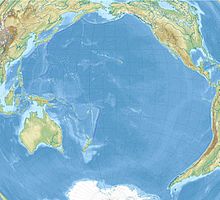| Battle of Kwajalein | |||||||
|---|---|---|---|---|---|---|---|
| Part of the Gilbert and Marshall Islands campaign of the Pacific Theater (World War II) | |||||||
 Soldiers of the U.S. 7th Infantry Division attack a Japanese blockhouse on Kwajalein. | |||||||
| |||||||
| Belligerents | |||||||
|
|
| ||||||
| Commanders and leaders | |||||||
|
U.S. Navy: Richmond K. Turner U.S. Marine Corps: Holland M. Smith Harry Schmidt Thomas E. Watson U.S. Army: Charles H. Corlett |
Monzo Akiyama † Masami Kobayashi Yamada Michiyuki † Yoshimi Nishida † | ||||||
| Units involved | |||||||
|
Kwajalein Garrison:
| |||||||
| Strength | |||||||
| 46,670[1]: 27–28 |
Kwajalein: about 5,000 Roi-Namur: about 3,000[1]: 31 | ||||||
| Casualties and losses | |||||||
|
Kwajalein: 142 killed 845 wounded 2 missing Roi-Namur: 206 killed 617 wounded 181 missing[1]: 88 |
Kwajalein: 4,300 killed 166 captured Roi-Namur: 3,500 killed 87 captured[1]: 88 | ||||||
Location within Marshall Islands | |||||||
The Battle of Kwajalein was fought as part of the Pacific campaign of World War II. It took place 31 January – 3 February 1944, on Kwajalein Atoll in the Marshall Islands. Employing the hard-learned lessons of the Battle of Tarawa, the United States launched a successful twin assault on the main islands of Kwajalein in the south and Roi-Namur in the north. The Japanese defenders put up stiff resistance, although outnumbered and under-prepared. The determined defense of Roi-Namur left only 51 survivors of an original garrison of 3,500.
For the US, the battle represented both the next step in its island-hopping march to Japan and a significant morale victory because it was the first time the Americans had penetrated the "outer ring" of the Japanese Pacific sphere. For the Japanese, the battle represented the failure of the beach-line defense. Japanese defenses became prepared in depth, and the Battles of Peleliu, Guam, and the Marianas proved far more costly to the US.

